I was watering one of my potted bamboos yesterday, and since the weather has been much nicer these last few days (not as hot, humidity gone, nice breeze) I was just standing there looking around for a few minutes. One thing I noticed was a small oak sapling that I've been meaning to remove -- well, not so small anymore as it's about 8 feet tall now.
Normally I'd spend about 15 seconds looking at this plant, but this time there was something interesting about it: fuzzy brown balls on many of the leaves.
These are galls. Galls are the ball-like growths on plant stems, leaves, or trunks caused by insects, fungi, or bacteria.
Galls can often be quite ugly, but these are pretty attractive ones, looking a lot like tribbles from the classic Star Trek episode.
Since these are all located along the main veins of the leaf, and are all on the upper surface of the leaves, I'm pretty sure these are caused by an insect of some sort.
What sort of insect though? There is caterpillar damage on some of the leaves, but I don't think it's related. I'm pretty sure there are no moths or butterflies that create galls.
A little bit of Internet research tells me that these are probably caused by an oak gall wasp of some sort.
The wasp lays eggs on the leaves, and somehow, for some reason, the plant forms a protective casing around the egg. So each of these fuzzy balls contains a tiny wasp larva. Usually the galls pose no threat to the plant.
There are hundreds of species of oak gall wasp, so there's no easy way to determine which exact species caused these to form. I couldn't find an exact match to the fuzzy gall images available.
I wonder why they turn fuzzy? They're obviously plant material, but it's not like these oaks are covered in fuzz normally -- unless maybe you're looking at the world through Theodore Geisel's eyes.
I wanted to crack a few of these open to see the larvae. No easy task since they're so small.
You can see the green "stem" where this attached to the leaf.
I did open a few by carefully prying them with my fingernails, but the larva must be too small to be easily seen.
That little brownish dot must be the larva.
The color of the "shell" of this one on the right probably indicates that it's older, but it's still not possible to make out more than a little colored dot which is most likely the larva. Maybe I'll check back in a week or two to see if they're any larger. At that time I'll put one under my microscope and see what I can see. Might be hard to get photos from the 'scope, but I think I can figure something out.
I'm glad I saw these this morning, as I've learned a little bit more about gall wasps. I'm really curious about how exactly these galls form though...
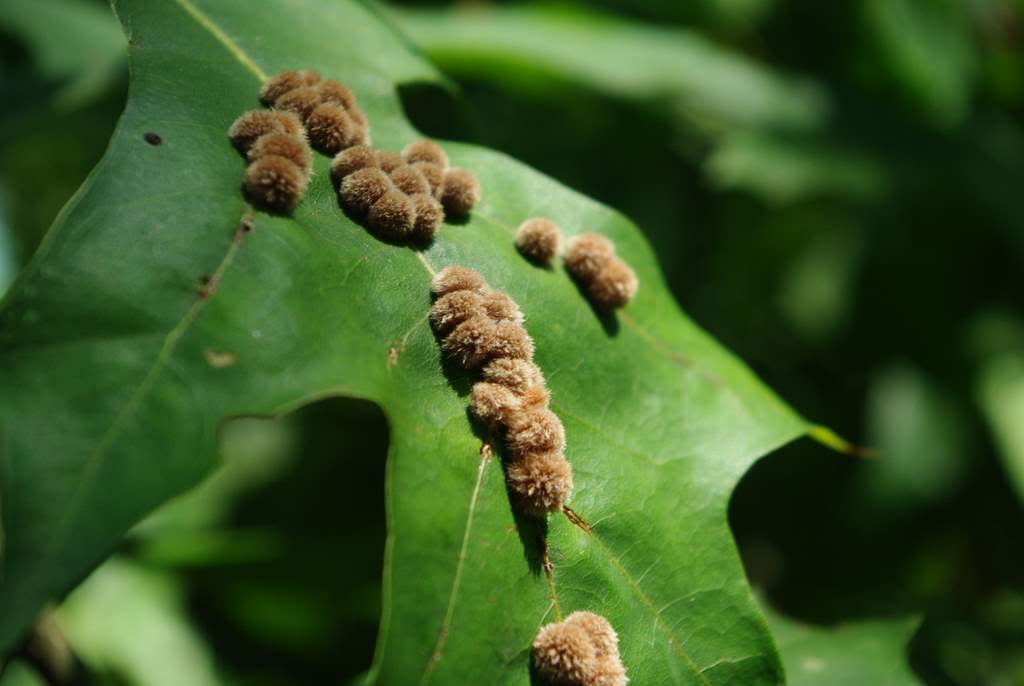
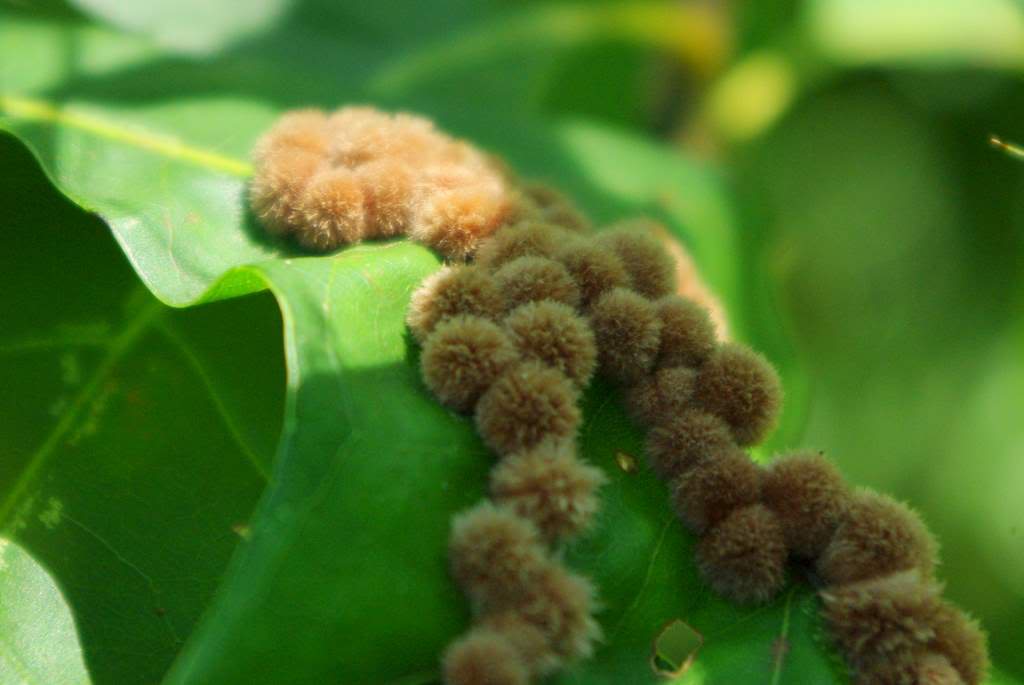

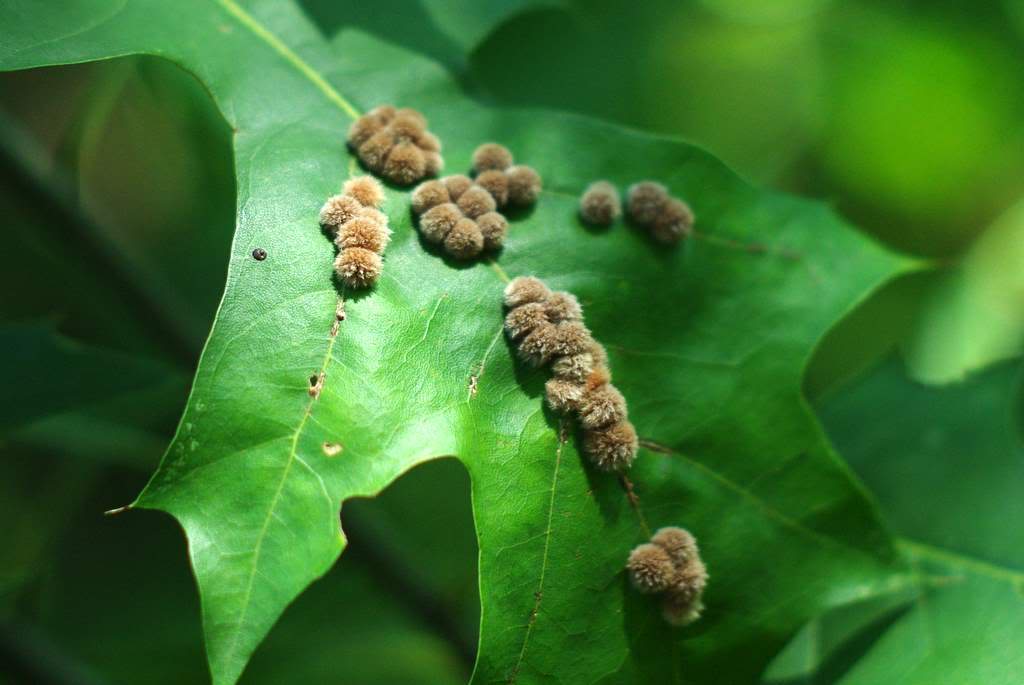

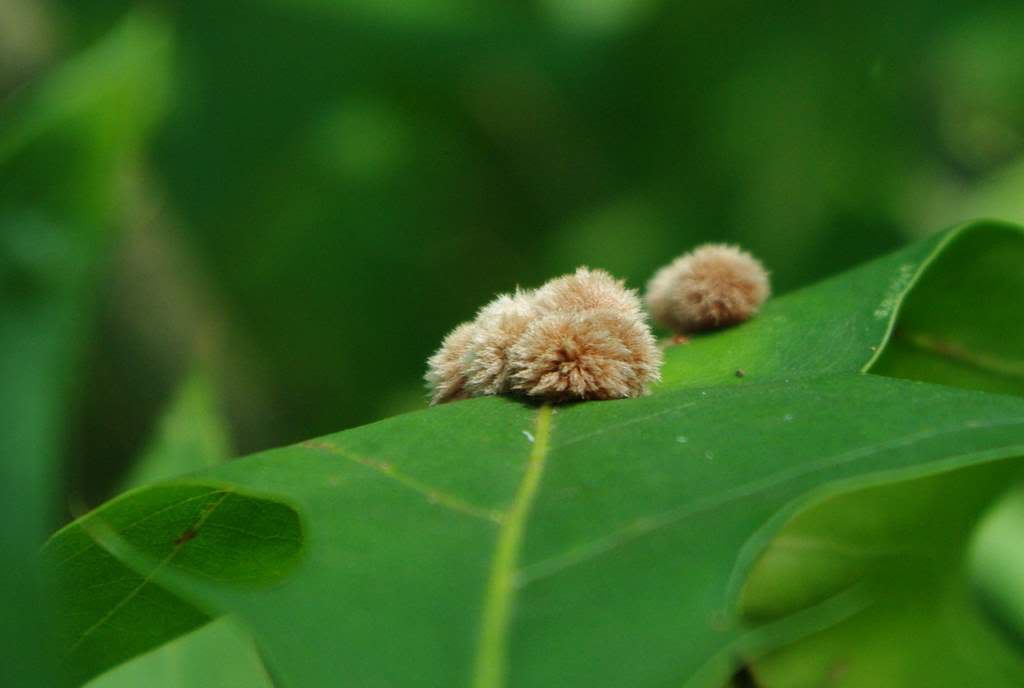
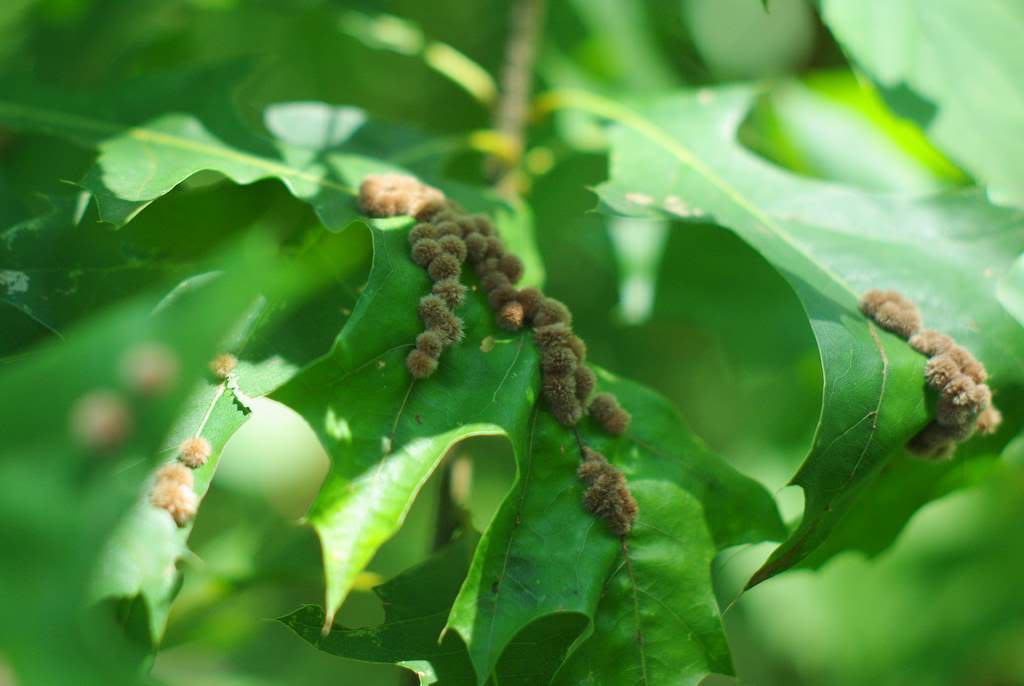
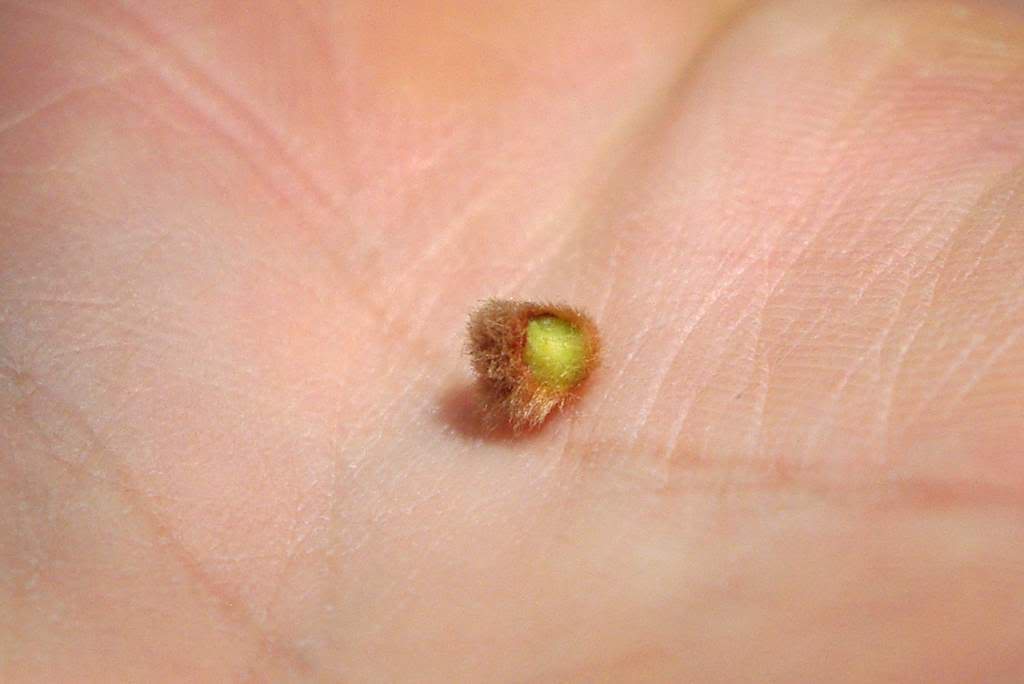


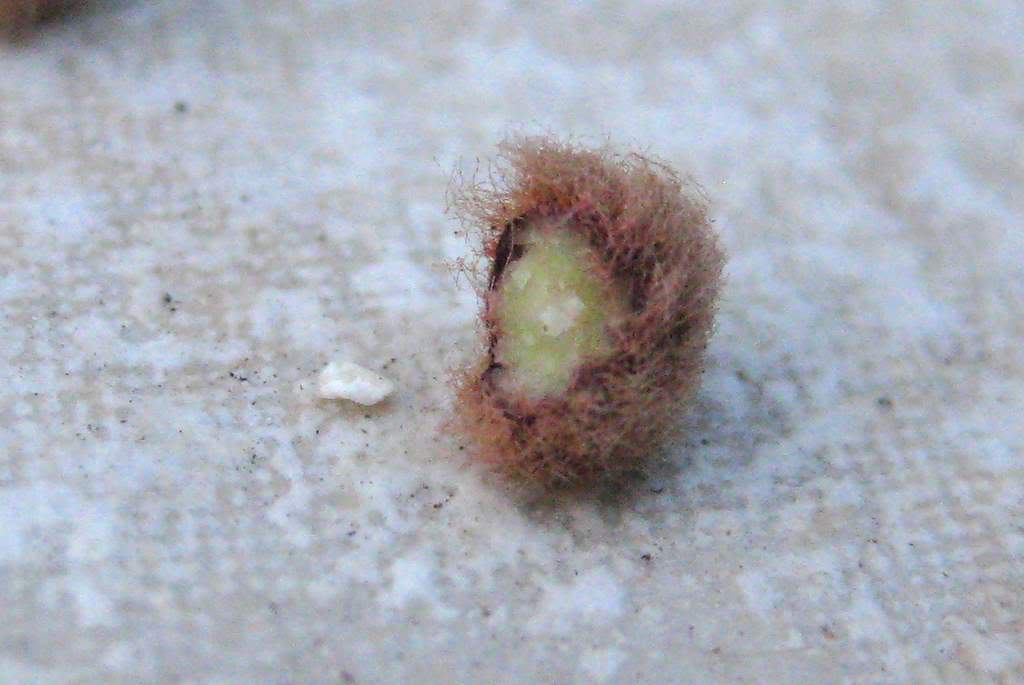


There are actually some galls caused by moths, but none in oaks. These, like most oak galls, are caused by cynipid wasps--I think the species may be Callirhytis furva.
ReplyDeleteThanks for the ID Charley!
ReplyDelete